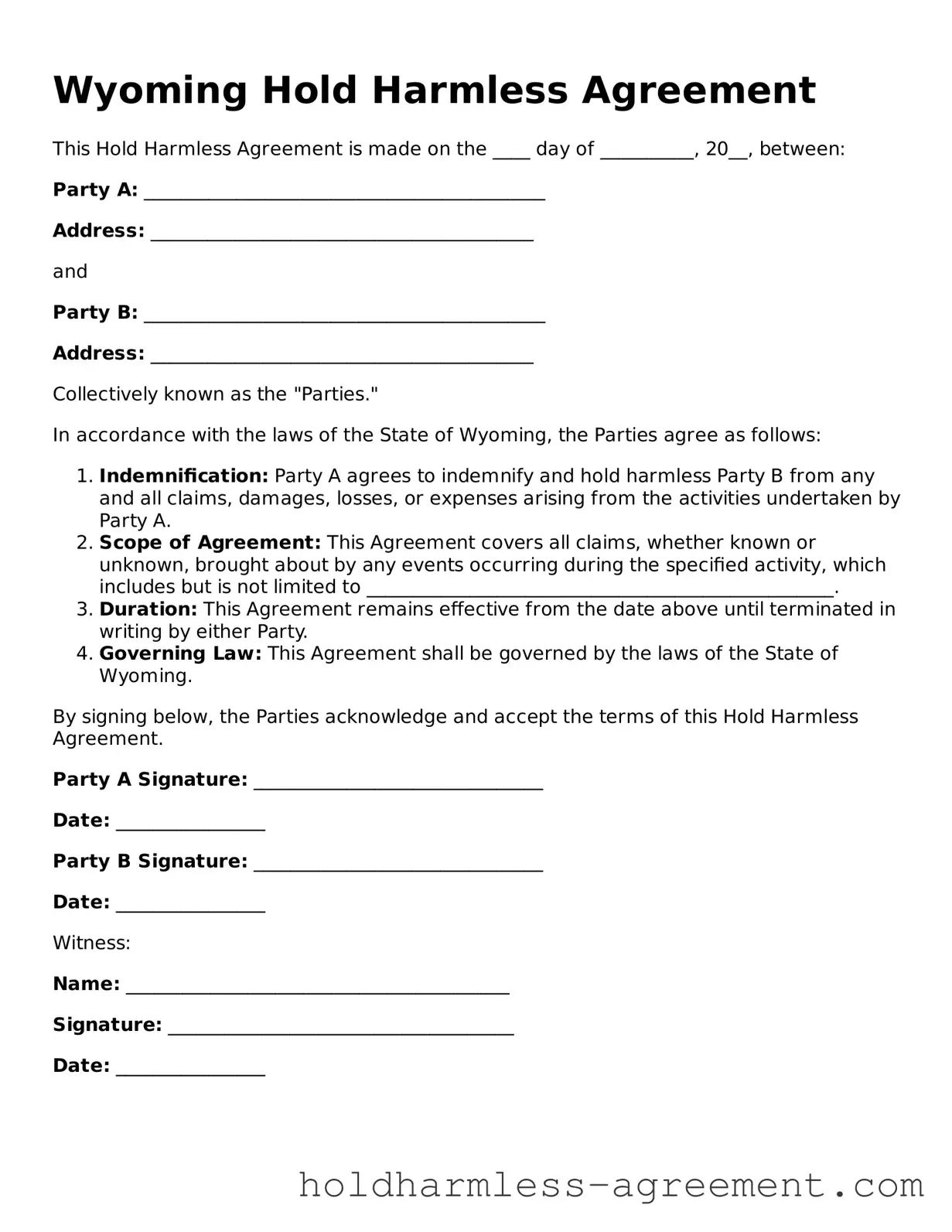What is a Wyoming Hold Harmless Agreement?
A Wyoming Hold Harmless Agreement is a legal document that protects one party from liability for any injuries or damages that may occur during a specific activity or event. It ensures that the other party agrees not to hold them responsible for certain risks associated with that activity.
Who typically uses this agreement?
This agreement is often used by businesses, event organizers, contractors, and individuals who engage in activities that may pose risks to participants or third parties. Common scenarios include:
-
Sports events
-
Construction projects
-
Rental agreements for equipment
What are the key components of the agreement?
A typical Wyoming Hold Harmless Agreement includes the following elements:
-
The names and contact information of the parties involved.
-
A clear description of the activity or event.
-
A statement outlining the risks involved.
-
The specific language that releases one party from liability.
-
Signatures of both parties, indicating their consent.
Is the Hold Harmless Agreement legally binding?
Yes, once both parties sign the agreement, it becomes legally binding. However, it must be clear and specific to be enforceable. Courts may not uphold vague or overly broad agreements.
Can a Hold Harmless Agreement be modified?
Yes, the agreement can be modified if both parties agree to the changes. It’s essential to document any modifications in writing and have both parties sign the updated agreement to maintain its validity.
What happens if one party breaches the agreement?
If one party fails to adhere to the terms of the Hold Harmless Agreement, the other party may seek legal remedies. This could involve filing a lawsuit for damages resulting from the breach, depending on the circumstances and the terms outlined in the agreement.
Do I need a lawyer to create a Hold Harmless Agreement?
While it is possible to create a Hold Harmless Agreement without legal assistance, consulting a lawyer is advisable. A legal professional can help ensure that the agreement is comprehensive, clear, and tailored to your specific needs, reducing the risk of future disputes.
